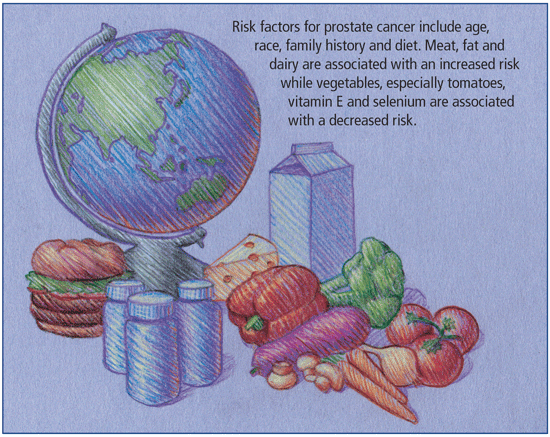June M. Chan, ScD, Assistant Adjunct Professor, Departments of Epidemiology & Biostatistics and Urology, University of California, San Francisco, CA, USA.
Prostate cancer is the most commonly diagnosed cancer and is second only to lung as the most fatal cancer among men in the United States. It is the ninth most common cancer in the world, with higher rates predominating in North America, Europe and Australia, and lower rates reported in Hong Kong, Japan, India and China. The main non-modifiable risk factors include age, race and family history.
The incidence of prostate cancer increases exponentially with age, with men age 75-79 experiencing an incidence rate more than 100-times greater than that of men age 45-49 (age-specific prostate cancer incidence rate for men age 75-79 = 1400/100,000 person-years; for men age 45-49 = 11/100,000 person-years).1

African Americans have the highest recorded age-standardized rates in the world, estimated at 137 cases per 100,000 persons in 1997 according to Surveillance, Epidemiology, and End Results (SEER) data.2 In contrast, the rate among Caucasians in the U.S. was 101/100,000. Europeans tended to have rates in the range of 20-50 cases/100,000.

